My 30th “En Movimiento” column for Caiman Cuadernos de Cine, formerly known as the Spanish Cahiers du Cinema, written in late January, 2013. — J.R.
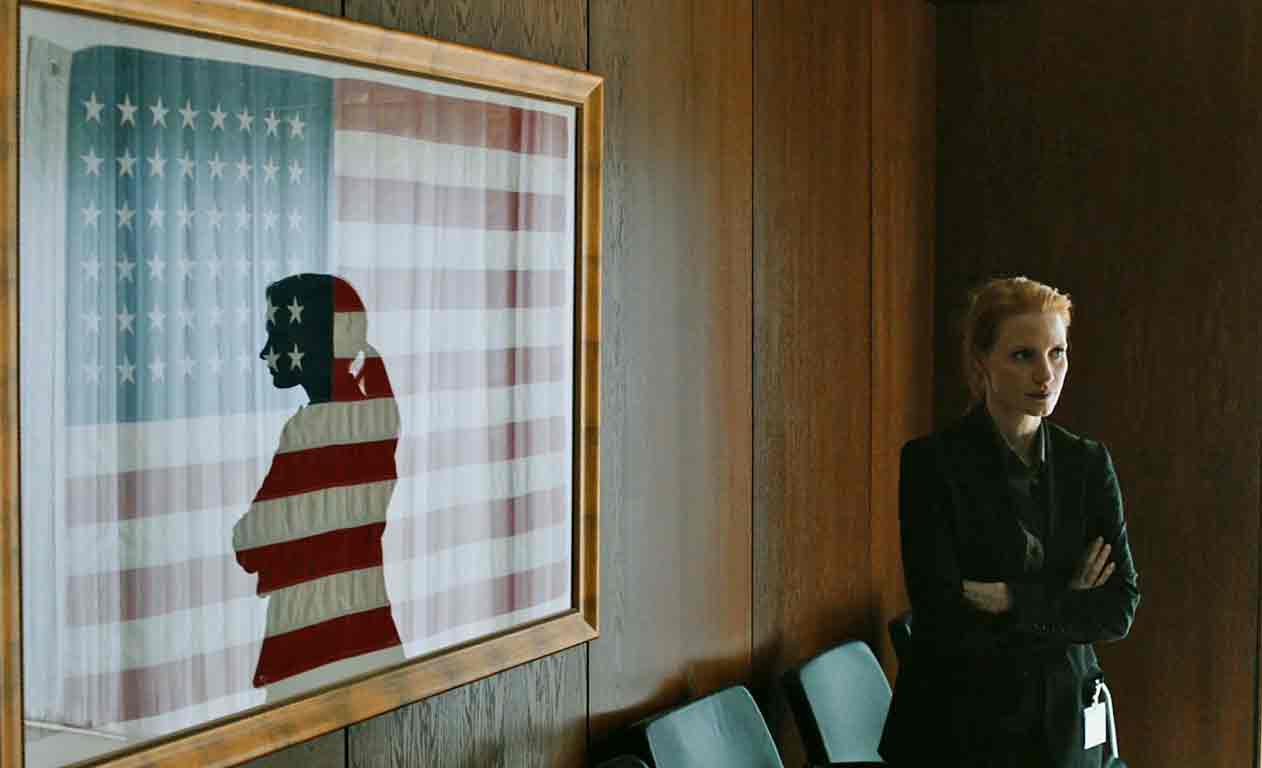
The debates about Kathryn Bigelow and Mark Boal’s Zero Dark Thirty in the United States have been substantial. Critical positions have ranged from Ignatiy Vishnevetsky’s measured defense at mubi.com/notebook/posts to Steve Coll’s attack in The New York Review of Books (to cite two of the less hysterical and more intelligent responses), and have only been exacerbated by the five Academy Award nominations the film has received. When I finally saw the film myself, it was apparent that part of the controversy derived from a certain ambiguity in the film’s depiction of torture, made all the more ambiguous by the filmmakers’ misleading and mainly unconvincing claims of political neutrality — a battle still being waged in the February issue of Sight and Sound, where Nick James, the editor of that English monthly, begs to differ with the negative judgments of two of his writers towards the film, even though he concedes that Bigelow’s naïve contention that “The film doesn’t have an agenda, and it doesn’t judge” has only helped to confuse matters.I agree with James that the climactic killing of Osama bin Laden registers largely as a hollow and morally dubious victory, but I also believe that the film’s commercially motivated attempt to be circumspect about its overall critical position makes it easy to misinterpret. Read more
From the Chicago Reader (December 27, 1997). — J.R.
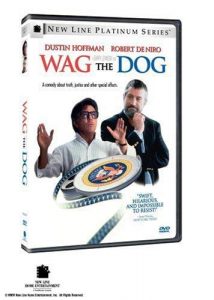
Robert De Niro plays a presidential spin doctor spurred into action after a sex scandal threatens to destroy his boss’s chances for reelection. He flies to southern California, engaging a flamboyant Hollywood producer (Dustin Hoffman, reportedly lampooning Robert Evans) to help fake a war in Albania that will make the president shine again. Hilary Henkin and David Mamet’s script is gleefully hyperbolic without ever straying from its political target — the gulf war is repeatedly cited as the conspirators debate what the American public will swallow. Wag the Dog falters only in coming up with an adequate curtain closer (and in keeping both public response and the president out of frame, which makes the proceedings more theoretical than is necessary). Otherwise this is hilarious, deadly stuff, sparked by the cynical gusto of the two leads as well as the fascinating technical display of how TV “documentary evidence” can be digitally manufactured inside a studio. Barry Levinson directed with a reasonable amount of panache; with Kirsten Dunst, Anne Heche, William H. Macy, Andrea Martin, and Willie Nelson. Starts next Friday, January 2. — Jonathan Rosenbaum
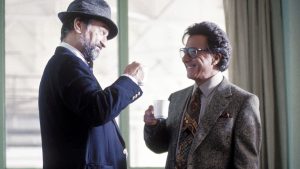 Read more
Read more
Sight and Sound commissioned the following from me for its “Home Cinema” feature in its September 2013 issue, but then, without telling me (or explaining why), decided not to use it. — J.R.
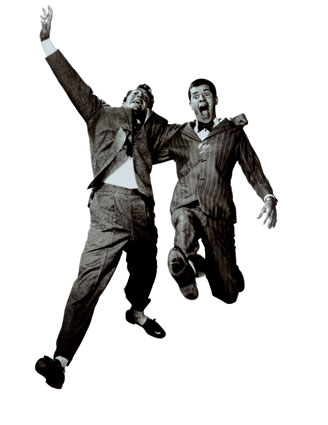
I haven’t yet caught up with Jerry Lewis’ spotty directing for TV, such as his episodes for Ben Casey (1964) and The Bold Ones (1970) or — more intriguing — L’uomo d’oro, fifteen two-minute sketches made for Italian TV in 1971. But there’s no doubt that his main creative bond with television is from live broadcasts — chiefly appearances with Dean Martin between 1948 and the mid-1950s in which the cascading, anarchic improvs, significantly erupting during one of America’s most repressive periods, made the whole notion of any plotted mise en scène superfluous. Luckily, I did get to see a late manifestation of this tendency in the mainly live segments of the 90-minute L’invité du dimanche in 1971, when Lewis, using hardly a single word of French, held a large audience captive (including Jean-Pierre Cassel, Louis Malle, and Pierre Etaix, virtually at his feet) with his prolonged and highly inventive antics. Just as no one turns to Jo Jo Dancer, Your Life is Calling (1986) for proof of Richard Pryor’s genius, or even cares about who directed Richard Pryor Live in Concert, Lewis’s distinction as an auteur, both dangerous and enduring, is founded on the threat of his physical presence. Read more
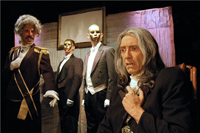
One of the joys of living in Chicago is the special quality of its scruffy storefront theater, although I must confess that during my 20 years here as a film reviewer, I took advantage of this resource only rarely, apart from a few intermittent discoveries over the years (such as the 21-year-old Theatre Oobleck, which I was lucky enough to stumble upon and savor in some of its earliest productions). More recently, since my retirement from the Chicago Reader, I’ve happily come across no less than four separate theaters of this kind in my own neighborhood so far, and over the past two Friday evenings I’ve had the pleasure of attending very impressive productions of Brecht’s The Good Soul of Szechuan at the Strawdog (on 3829 North Broadway) and, tonight, Strindberg’s The Ghost Sonata at the Oracle just a few doors down from there (on 3809 North Broadway).

The Strawdog’s funky and entertaining version of Brecht (see above) has had the benefit of a thoughtful and passionate rave from the Reader’s Albert Williams, so the performance I attended was nearly sold out. But the Oracle’s Strindberg, despite a mainly favorable capsule in the same paper from Kerry Reid, shockingly had only seven customers at the performance I attended tonight, making us a slightly smaller crowd than the production’s able cast of eight. Read more
From the Chicago Reader (January 31, 1992). — J.R.
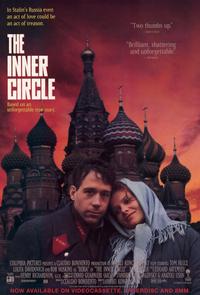
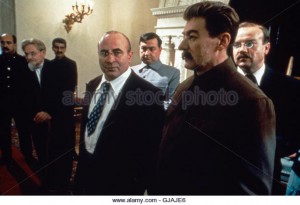
Ever since he moved to the West, filmmaker Andrei Konchalovsky has been an invaluable presence not only for his considerable talent but also for his capacity to translate Russian dramatic forms into American entertainments. Returning to Russia to film (in English) the story, partly based on fact, of Joseph Stalin’s personal projectionist, he broaches a disturbing and important reality about Russian history that our own culture has tended to ignore: an overwhelming majority of simple, ordinary Russians not only kowtowed to Stalin but genuinely loved and revered him. The projectionist (Tom Hulce), a simpleton from the provinces, loves Stalin more than he loves his own wife (effectively played by Lolita Davidovich); unfortunately, Hulce’s performance is often gratingly hammy and occasionally undercut by lines of dialogue indicating more awareness than the character otherwise shows. Still, as Murray Kempton has suggested, the lack of complexity in Konchalovsky’s characters may diminish the film’s overall accomplishment but shouldn’t be allowed to serve as an excuse to overlook it; as he puts it, the film’s “intention is nonetheless heroic, and its achievement admirable.” Coscripted by Anatoli Usov; with Bob Hoskins, Feodor Chaliapin Jr., and, in the part of Stalin, Alexandre Zbruev. Read more
From the Chicago Reader (February 1, 1992). — J.R.
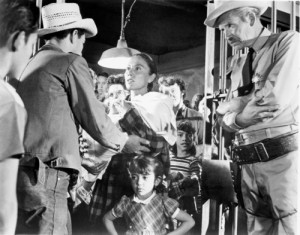
This rarely screened 1954 classic is the only major American independent feature made by communists; a fictional story about the Mexican-American zinc miners in New Mexico then striking against their Anglo management, it was informed by feminist attitudes that are quite uncharacteristic of the period. The film was inspired by the blacklisting of director Herbert Biberman, screenwriter Michael Wilson (A Place in the Sun), producer and former screenwriter Paul Jarrico, and composer Sol Kaplan, among others; as Jarrico later reasoned, since they’d been drummed out of Hollywood for being subversives, they’d commit a crime to fit the punishment by making a subversive film. The results are leftist propaganda of a very high order, powerful and intelligent even when the film registers in spots as naive or dated. Basically kept out of American theaters until 1965, it was widely shown and honored in Europe, but it’s never received the recognition it deserves stateside. If you’ve never seen it, prepare to have your mind blown. 94 min. (JR) Read more
From the Chicago Reader (July 14, 1995). — J.R.
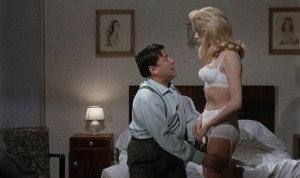
Though it may not reach the level of sublimity of his three last features, Luis Buñuel recounts the story of a frigid upper-class housewife (Deneuve), devoted to her husband (Jean Sorel), who secretly works at a high-class brothel every weekday afternoon in order to satisfy her masochistic impulses. Placing the heroine’s fantasies, dreams, and recollections on the same plane as her everyday adventures, Buñuel comes closer to the French New Wave than he did before or after, and much of his secondary cast reinforces this association (including Michel Piccoli, Macha Meril, and, most memorably, Pierre Clementi as a dandyish gangster), but there are also many explicit visual and aural echoes of his surrealist beginnings (Un chien andalou and L’age d’or). Haunting, amusing, provocative, teasing, and elegant in its puzzlelike ambiguities, this is essential viewing. With Genevieve Page, Francisco Rabal, Georges Marchal, and Francoise Fabian (a couple of years before Eric Rohmer “discovered” her in Ma nuit chez Maud). Fine Arts.
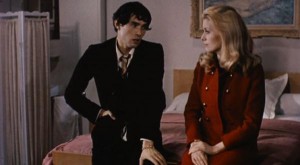 Read more
Read more
From the Chicago Reader (July 1, 1989). This film is now available on a Blu-Ray from Warners, with an excellent audio commentary by Robert Wise, all four of the lead actors, and screenwriter Nelson Gidding. And for the record, a recent look confirms that it isn’t at all “stiff in the joints”; Jack Clayton’s The Innocents may be more accomplished, but this is still a rousing, intelligent, and provocative horror film.– J.R.
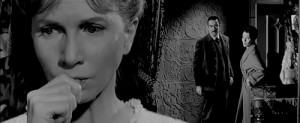
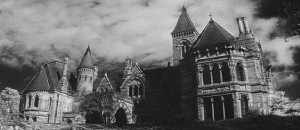
Robert Wise’s 1963 black-and-white ‘Scope translation of Shirley Jackson’s The Haunting of Hill House was pretty effective when it came out; it may be a little stiff in the joints by now, but it’s still a much better scare show than the stinker remake, and clearly aided by Wise’s skill as an editor. With Richard Johnson, Claire Bloom, Russ Tamblyn, and Julie Harris. 112 min. (JR)
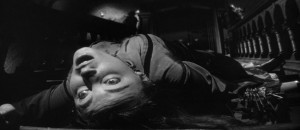
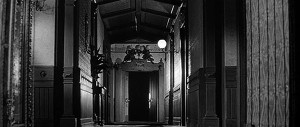 Read more
Read more
From the Chicago Reader (June 16, 1997). — J.R.
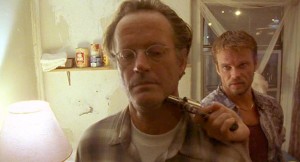
On the strength of this film and Ruby in Paradise, Florida independent Victor Nuñez may actually be the best director of actors in American movies right now. See what he does here with someone as unpromising as Peter Fonda, not to mention Jessica Biel, J. Kenneth Campbell, and the wonderful Patricia Richardson. When the beauty of his writing is factored in with the solid, patient realism of his direction — in both his adaptations (Gal Young ‘Un, A Flash of Green) and his more recent originals — he seems to be one of our most adept novelistic filmmakers as well. The only limitation of his fourth feature is a story that’s fairly familiar, both as an account of personal redemption — Fonda as a Vietnam vet, beekeeper, widower, and grandfather trying to hold the remainder of his family together — and as a crime story involving the former cronies of the veteran’s wayward and incarcerated son. Still, this is so stylistically fresh and sensitively nuanced that you aren’t likely to mind much. (JR)
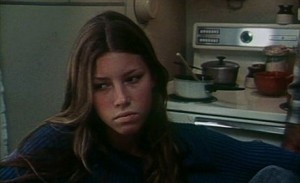
Read more
From the Chicago Reader (July 4, 1997). — J.R.
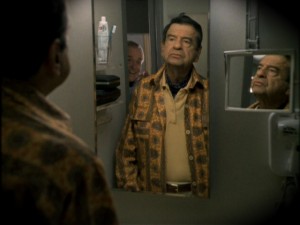
Unless I’ve lost count, this is the seventh comedy pairing Jack Lemmon and Walter Matthau, and neither the standard-issue trailer nor the prospect of seeing these geezers as dance hosts on a Caribbean luxury cruise filled me with any sympathetic anticipation. For a long time this duo has been picking through ersatz or second-rate Billy Wilder and Neil Simon material without adding any sparks. I can’t really say that Robert Nelson Jacobs’s predictable script is anything special either. But director Martha Coolidge’s warmth, grace, and generosity in handling not just this team but a fleet of talented troupers — above all Dyan Cannon, Gloria De Haven, Donald O’Connor, and Elaine Stritch, but also Brent Spiner, Hal Linden, Edward Mulhare, and Rue McClanahan — make much of this a genuinely joyful experience, and the dancing alone is well worth seeing. Be sure to stick around for the closing credits. Broadway, Esquire, Evanston, Golf Glen, Lake, Lincoln Village, Norridge. — Jonathan Rosenbaum
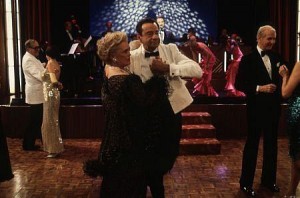 Read more
Read more
From the Chicago Reader (July 1, 2001). — J.R.
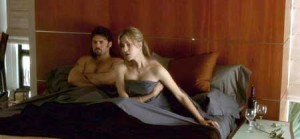
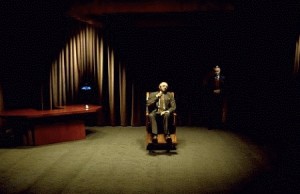
I’m still trying to decide if this 146-minute piece of hocus-pocus (2001) is David Lynch’s best feature between Eraserhead and Inland Empire. In any case, it’s immensely more likable than his other stabs at neonoir (Blue Velvet, Wild at Heart, Lost Highway), perhaps because it likes its characters and avoids sentimentalizing or sneering at them (the sort of thing that limited Twin Peaks, at least in spots). Originally conceived and rejected as a TV pilot, then expanded after some French producers stepped in, it has the benefit of Lynch’s own observations about Hollywood, which were fresher at this point than his puritanical notations on small towns in the American heartland. The best-known actors (Ann Miller, Robert Forster, Dan Hedaya) wound up relatively marginalized, while the lesser-known talents (in particular the remarkable Naomi Watts and the glamorous Laura Elena Harring) were invited to take over the movie (and have a field day doing so). The plot slides along agreeably as a tantalizing mystery before becoming almost completely inexplicable, though no less thrilling, in the closing stretches — but that’s what Lynch is famous for. (JR)
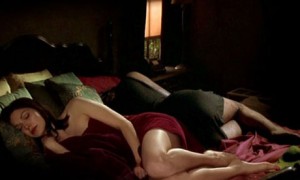
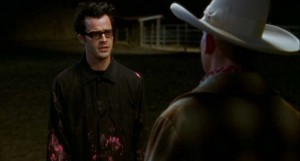 Read more
Read more
From the Chicago Reader (October 13, 1998). — J.R.
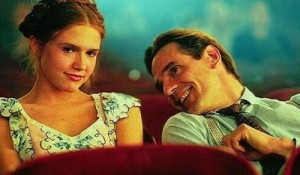
Though Adrian Lyne’s clodhopper direction, underlined by a mushy Ennio Morricone score, predictably runs the gamut from soft-core porn in the manner of David Hamilton to hectoring close-ups, this is perhaps Lyne’s best movie after Jacob’s Ladder — a genuinely disturbing (if far from literary) adaptation of Nabokov’s extraordinary novel, written by former journalist Stephen Schiff and starring, predictably, Jeremy Irons. It shines in the areas where Stanley Kubrick’s 1962 adaptation is deficient: Dominique Swain, the actress playing Lolita here, actually looks 14, making this much more a story about corrupted innocence, and it unfolds in American locations in the late 40s. In every other respect, however, Kubrick’s version is superior and will clearly endure as the better movie: Frank Langella as Quilty can’t hold a candle to Peter Sellers, and Melanie Griffith plays a poor second to Shelley Winters as the heroine’s mother. Your time would be better spent reading or rereading the novel than seeing either film version, but this overproduced 1998 art film has its moments. (JR)
 Read more
Read more
From the Chicago Reader (April 1, 1990). Thanks to the interview with Casper Tybjerg on Criterion’s dual-format release, I’m no longer sure if this was Dreyer’s “first substantial commercial release outside Scandinavia,” because Michael, made just before in Germany, also reportedly made a considerable splash. — J.R.
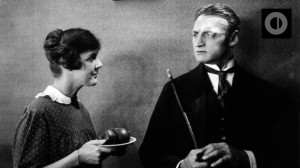
Formally and politically decades ahead of its time, Carl Dreyer’s wonderful silent Danish comedy (1925), his first substantial commercial success outside Scandinavia, recounts what happens when a working-class wife and mother, prompted by an elderly nurse, walks out on her tyrannical and demanding husband, who then has to fend for himself. Restricted mainly to interiors, Dreyer’s masterful mise en scene works wonders with the domestic space, and his script and dialogue make the most of his feminist theme. 110 min. (JR)
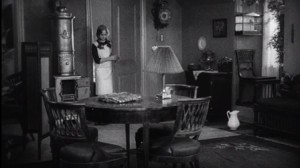 Read more
Read more
From the June 22, 2000 Chicago Reader. — J.R.

The Ontario Film Review Board has banned this history of U.S. marijuana laws because it contains 20 seconds of archival footage showing rhesus monkeys and chimpanzees smoking dope in a lab experiment. Apparently this violates the Ontario Theatres Act, which forbids abuse of an animal in making a film, although the board showed no concern about mice falling off a table or fish swimming sideways in the same sequence (at least the simians seem to be enjoying themselves). A better example of animal abuse might be compelling a filmmaker to submit his work to censors or incarcerating untold thousands of kids for having harmless fun while hypocritical state agents and presidents show an almost total lack of interest in the truth or falsity of their own antidrug propaganda. Director Ron Mann specializes in documentaries celebrating countercultural forms and practices (Comic Book Confidential, Twist, Poetry in Motion, Imagine the Sound); this hilarious yet frightening piece of agitprop, using found footage, period music, jaunty animated titles, and narration by Woody Harrelson (written by Solomon Vesta), is as entertaining and informative as anything Mann’s ever done and as good an example of grass humor as you’re likely to find. Read more
From the Chicago Reader (September 1, 1992). — J.R.
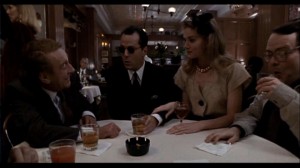
It seems almost impossible that someone could vulgarize and coarsen Tom Wolfe’s best-selling novel any further, but leave it to director Brian De Palma, working here with a script by Michael Cristofer, to plumb uncharted depths. Wolfe’s conservative, page-turning satire pretending to be centrist is the tale of Sherman McCoy, a young multimillionaire bond trader (Tom Hanks) who takes a wrong turn and winds up in the south Bronx, where his car hits a young black man, whose companion may have been trying to mug McCoy. The compromising circumstance of McCoy’s mistress being in the car with him doesn’t help matters when he finds himself at the center of political machinations involving among others a black religious leader (John Hancock), a district attorney running for mayor, and a down-and-out alcoholic reporter. It’s easy enough to accept the unconvincing Brit journalist of the original being turned into an American narrator played by Bruce Willis. But the novel — informed by some sophistication about New York politics and life-styles even as it refrained from entering the consciousness of a single female or nonwhite character — is predicated on our never knowing (or caring too much) what actually happened in the south Bronx; the movie removes such ambiguity, couldn’t care less about accuracy (a white teacher at a ghetto high school is seen waxing his expensive sports car), turns the mistress (already a conniving bitch) into a bimbo, gets most of its kicks from moronic dialogue (including a truly offensive gag about AIDS), and then wraps things up with a self-righteous sermon by a black judge (Morgan Freeman) — a white judge in the novel — that concludes, Go home and be decent people. Read more





























